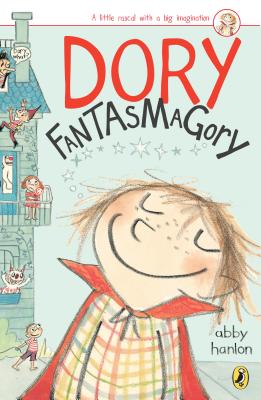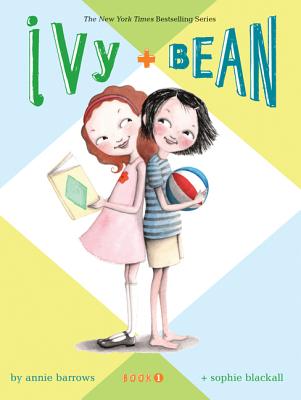craft review by Anne-Marie Strohman
Figuring out the opening for a novel can be daunting. We know we need to draw our readers in, to make them want to turn the page. And we have so many choices!
Even with the myriad ways to open a novel, there are some basic strategies that underlie even the most poetic openings. They orient the reader to the story and show the reader why they should keep reading. As I’ve been struggling with the opening of my middle grade novel, I turned to chapter books to see how they start. Because of their young audience, chapter books must draw readers in very quickly. How they do it can inform even the most complex middle grade and young adult novel openings.
What We Can Learn from Chapter Books
Chapter books for young readers often start with an opening that makes you fall in love with the main character. Some might have snappy first lines, but the voice of the characters and/or narrator ultimately make the reader want to keep reading. However, if readers aren’t oriented to the story, even the most charming voice is unlikely to keep them reading. Think of the three following elements as compass points, directing your readers into your story. First, the Five Ws (who, what, when, where, why) give readers the basic facts of your story, just like a newspaper article does. The Passover Question–Why is this night different from all other nights?–shows readers why the story is important. And perhaps the writer’s best friend is a first chapter’s last line: it can propel readers into the rest of the book. Let’s take a look at how these elements play out in two well loved chapter books.
Dory Fantasmagory
 Abby Hanlon’s darling Dory Fantasmagory starts with her character right from the start: “My name is Dory, but everyone calls me Rascal. This is my family. I am the little kid” (1). Hanlon scaffolds her opening with art, first an image of a family portrait. She introduces Dory’s brother and sister, who play a huge role in the plot, and introduces the plot motivation all in 4 short sentences: “My sister’s name is Violet and my brother’s name is Luke. Violet is the oldest. Violet and Luke never want to play with me. They say I’m a baby” (2).
Abby Hanlon’s darling Dory Fantasmagory starts with her character right from the start: “My name is Dory, but everyone calls me Rascal. This is my family. I am the little kid” (1). Hanlon scaffolds her opening with art, first an image of a family portrait. She introduces Dory’s brother and sister, who play a huge role in the plot, and introduces the plot motivation all in 4 short sentences: “My sister’s name is Violet and my brother’s name is Luke. Violet is the oldest. Violet and Luke never want to play with me. They say I’m a baby” (2).
The story then moves into dialogue. Though the opening is a “slow burn,” Hanlon stays focused on elements key to the story—the conflict between Dory’s view of herself and her siblings’ view of her as a baby. A lot happens in the twenty-two quick pages of Chapter 1; the story moves at a fast pace because of the dialogue and incorporated illustrations. The first chapter includes an introduction to Dory’s invisible monster Mary, more about her siblings, Dory’s propensity for asking questions, more about monsters, Violet and Luke’s plan to scare Dory into not acting like a baby, and their execution of the plan—telling Dory that Mrs. Gobble Gracker eats babies so she’d better not act like a baby—and Dory’s surprising reaction to the plan. The first chapter ends with a cliffhanger: Violet says, “I don’t even want to know what happens next.” (But we as readers sure do!)
Hanlon’s first chapter establishes the necessarily elements to satisfy even the youngest reader’s expectations. She shows us WHO: Dory; WHEN: at the end of summer; WHERE: her house; WHAT: her siblings make up the monster Mrs. Gobble Gracker who eats babies; WHY: to scare Dory into not acting like a baby anymore. Hanlon’s WHAT and WHY are especially strong, and readers want to know if the plan will succeed. By making Dory’s initial response curiosity rather than fear, Hanlon hints that the story may go in unexpected directions. (And it does.)
It’s also clear that the Passover Question is answered. Why this day? The story starts on this day because it’s the day Dory is introduced to the idea of Mrs. Gobble Gracker, who becomes her nemesis. Through all of this, Dory’s voice shines. She is unique and engaging. Hanlon makes a clear start to the book that draws readers in and makes them want to keep turning the pages.
Ivy and Bean
 Ivy and Bean, by Annie Barrows, and illustrated by Sophie Blackall, has a very different approach to the story, yet it is equally engaging. While Dory is in first person present tense, Ivy and Bean is in third person past tense. Whereas Hanlon’s first chapter covers a wide range of material (all clearly focused on the plot), Barrows doubles down on character and character relationships.
Ivy and Bean, by Annie Barrows, and illustrated by Sophie Blackall, has a very different approach to the story, yet it is equally engaging. While Dory is in first person present tense, Ivy and Bean is in third person past tense. Whereas Hanlon’s first chapter covers a wide range of material (all clearly focused on the plot), Barrows doubles down on character and character relationships.
The first chapter opens with a snappy opening line: “Before Bean met Ivy, she didn’t like her.” There’s conflict built in—Ivy and Bean are set in contrast to each other. The chapter stays in Bean’s point of view and focuses on Bean’s perspective of Ivy, who has moved in across the street. In early dialogue (starting in the fourth sentence of the book), Bean’s mom says that Bean should play with Ivy because “she looks nice,” and that is exactly the problem, according to Bean: “But nice, Bean knew, is another word for boring” (8). Barrows continues by contrasting Bean’s and Ivy’s behavior and appearance. The chapter then returns to Bean’s conversation with her mom about Ivy.
Ivy and Bean is illustrated, though the illustrations are not incorporated into the text as Hanlon’s are, and with multiple illustrations, the first chapter covers only six pages (four of text). The chapter is tightly focused and relies on Bean’s perspective and voice to turn the snappy opening into a first chapter that draws readers in through character voice. The chapter also ends with a sentence that catapults readers into the next chapter: “But one day something happened that changed her mind.” (What can that something possibly be?!?)
Even though Barrows’s first chapter is much shorter than Hanlon’s, it still ticks all the boxes. For the 5Ws, WHO: Bean and Ivy; WHERE: in their neighborhood; WHAT: Bean doesn’t want to play with Ivy; WHY: she seems nice and boring; WHEN: the day things changed between Ivy and Bean. While the WHAT and WHY are not as specific to the plot-to-come as Hanlon’s are, we know there’s conflict, and we know that something happens to change Bean’s mind. The second chapter introduces the main plot and its WHAT and WHY—Bean wants to help her sister Nancy get out of her bossy stage, and she and Ivy team up to play a gigantic trick on her.
The voices of the narrator and of Bean in the first chapter are engaging. Bean is cranky in all the right ways, and her point of view is refreshingly honest and kid-like. Barrows also lets us know right up front the answer to the Passover Question: this is the day that something happens to change Bean’s mind about Ivy. Because this is a character-driven book, a character-focused first chapter makes sense. By setting up Bean’s character and her assumptions about Ivy, Barrows prepares readers to be surprised about who Ivy really is. Bean is someone readers are happy to spend a book (and a series) with, and from the very beginning we suspect that Ivy will be as well.
Takeaways for Novelists
With their character-focused openings, clear sense of voice, problems that grow out of character and conflict, and propelling movement, Ivy and Bean and Dory Fantasmagory prepare readers for wonderfully told tales that keep us engaged. And both are favorites with readers. Ivy and Bean, Book 11 came out in July 2018, and the fourth Dory Fantasmagory, Head in the Clouds, came out in April 2018.
Writers, no matter what the genre or age-level, can make their openings most effective by digging deep into character, the WHAT and WHY of the plot (as well as the other three Ws), offering a consistent and engaging voice, and having a compelling answer to the Passover Question. Add to this a striking last line that propels readers to turn the page, and the writer will have an opening chapter that launches readers into their story.
Action: Analyze the first chapter of a few of your favorite novels. Do they offer the Five Ws, clearly establish voice, and answer the Passover Question?
Action: Analyze a novel or two that you find less successful. How does the opening line up?
Action: Take a look at your own first chapter. Do you establish the Five Ws, a compelling character voice, and answer the Passover Question?
Bonus points: Open your novel with a snappy first sentence. Include a last line that propels readers into the next chapter.
Anne-Marie Strohman (co-editor) writes picture books, middle grade novels, and young adult short stories and novels. She is trained as a teacher, an editor, and a scholar, specializing in Renaissance Literature. She holds an MFA in Writing for Children and Young Adults from Vermont College of Fine Arts and is an active member of SCBWI. Find her at amstrohman.com and on Twitter @amstrwriter.

Fantastic post! Bookmarking this for when I’m working on my novel.